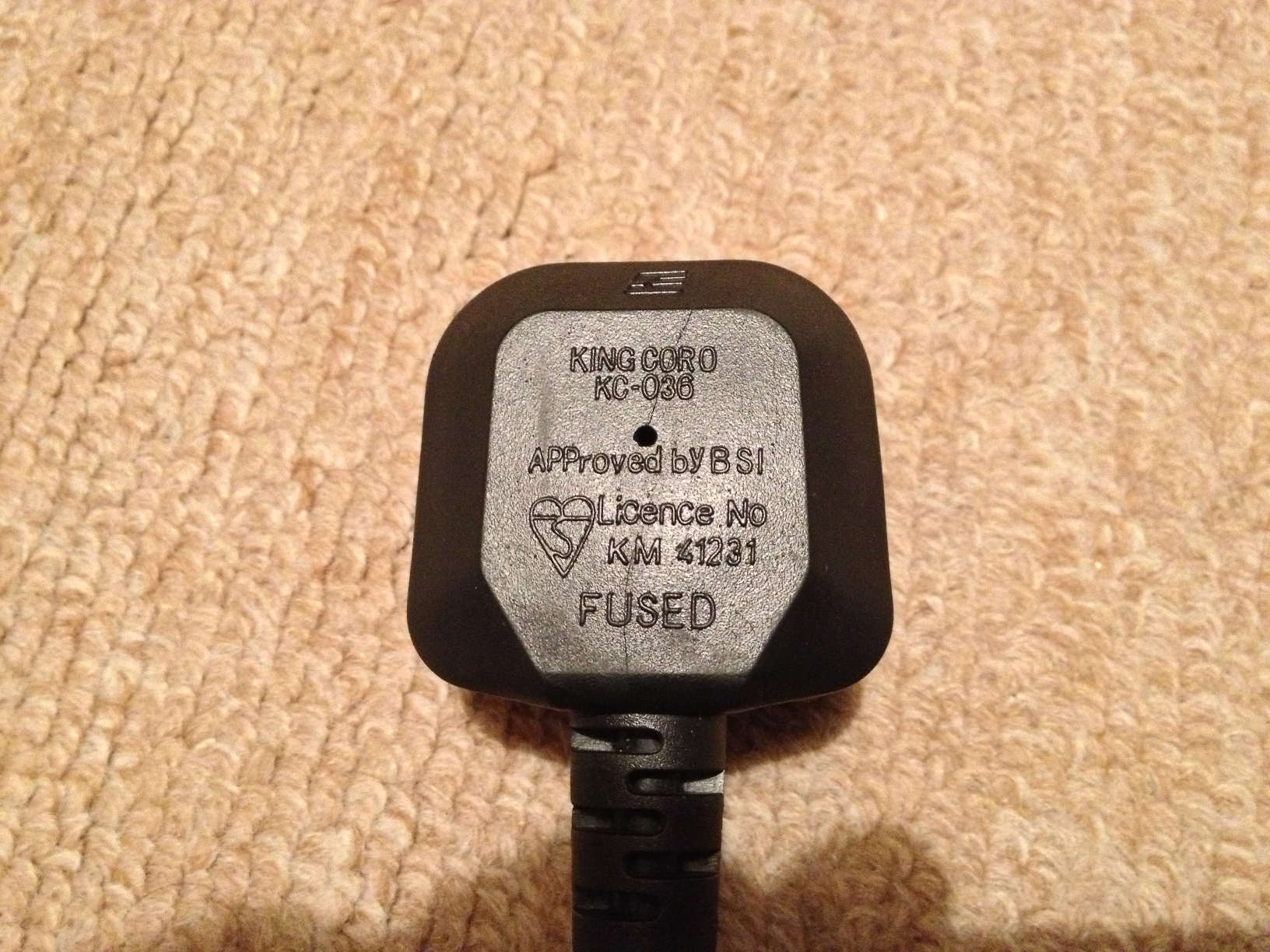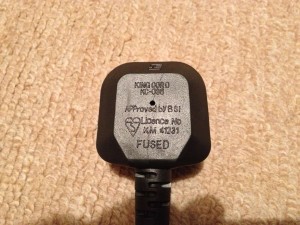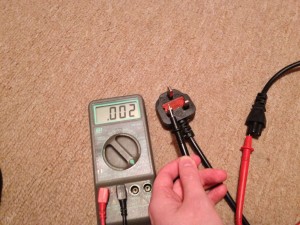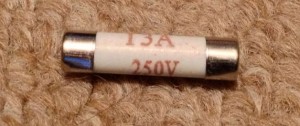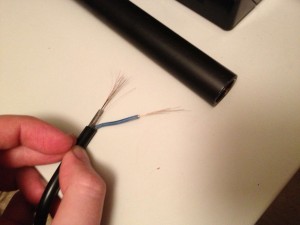I love a good counterfeit me. It always intrigues me just what can and will be copied (usually to a shocking – no pun intended – standard). Today, my attention is drawn to a rather dodgy looking mains cable I had been using with a third party laptop charger.
This lead actually turned up on a list of recalled products, which kind of gives you an idea of how badly some of these counterfeits are made.
At this point, I will stress that the mains cable did not come with the charger, and the charger was made by a reputable company, but lets turn our attention to the lead in question.
Here we have a plug claiming to be manufactured by “King Coro” model number KC-036, which is actually a poor copy of a genuine plug manufactured by King Cord with the same model number.
Now, lets have a look, in more detail, at the business end of the cable – the plug.
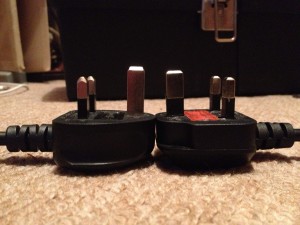
A side by side comparison of the two plugs. The one on the left is genuine, the one of the right is fake.
Here I have put two cables side by side. Sadly, I don’t have the genuine King Cord one to make a direct comparison, but the one I’ve used here does conform to British standard BS1363. The obvious thing we see here is that the earth pin is partially insulated. This is unsafe because a lot of sockets make contact with the earth pin first and when the plug is pushed fully into the socket, this earthing connection is blocked by the sleeve on that pin. If the device was to malfunction and the external case became live, there would be nowhere for that live electricity to flow until someone was to touch it, this could be fatal! A plug with a partially insulated earth pin is always a fake.
I can’t stress enough, if you find any leads in your possession with partially insulated earth pins, the best thing to do is destroy it. Don’t rewire the cable with a new plug because, as you’ll see later, if you can’t trust the plug, you’d be stupid to trust the wiring.
What you can also see in the above image is that the pins are too short and, compared to the genuine article on the left, the earth pin is considerably shorter. This could mean the plug doesn’t sit firmly in the socket and could cause damage to the socket, the equipment, or worse, cause a fire. The chamfering on these pins are also not adequate, which could cause further damage to the socket each time the plug is inserted, and/or could cause the plug to pop out during use.
The connector on the other end of this lead is one commonly found on laptop chargers. On the left is the neutral hole, on the right is live, at the top is the earth hole.
Using a multimeter, it was revealed that the C5 connector had been wired in backwards. Things aren’t looking good for this cable. I confirmed this by doing the same test on the genuine cable and receiving the expected result.
Reports on the internet claim that these “King Coro” fakes are fitted with an unsafe fuse. Whilst I didn’t take this fuse apart, it’s plain to see there are no safety marking on it whatsoever. The end caps were bent and a little loose.
Other reports say that the fuse is actually bypassed and when removed, the plug still functions. Mine however did isolate correctly when the fuse was removed, so maybe mine had been revised a little.
Now for the stress test!
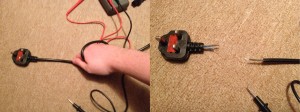
Left: Wrapping my hand round the cable. Right: The moulded plug detached from the cord after pulled with little effort.
I wrapped the cable round one hand, and gripped the plug with the other. With very little force, I was able to pull the moulded plug fitting clean off. If this plug was in the wall and someone was to trip over it, it could potentially leave the plug in the wall with trailing live wires. Of course, because there’s a chance the earth pin isn’t making contact, it’s possible that even if the live wire was to touch the earth in this state, nothing would happen, and the cable would remain live. The C5 connector on the other end was just as weak, meaning a similar situation could occur if there was force put on that end – like when pulling the connector out of the block by the cable.
Now, lets have a good look at the cable flex in more detail.
The writing on the side claims that the cable can withstand 300V/500V and the cross-section of the conducting wire is 0.75mm². That should easily be able to handle over 13 amps which would allow the fuse to blow first should there be a fault in the device the cable is connected to… of course, only if the wire is what it claims.
Inside we see non standard colour coding of the wires, and wire that is nowhere near to being the thickness labelled on the side, I also don’t think it could handle much load above 3 amps at best. If there was to be a short circuit in the laptop charger I was using, the wiring would be more likely to have burnt out than the fuse, which could cause a fire. This is why you shouldn’t attempt to rewire a cable with an illegal plug, as the wiring isn’t usually that much better.
Thankfully, I noticed this cable before it could do any damage. The volunteer run organisation PlugSafe highlights many more dangers with counterfeit cables and how to spot them. When it comes to buying replacement cables, always make sure your cable is safe before using it.
Cheers

